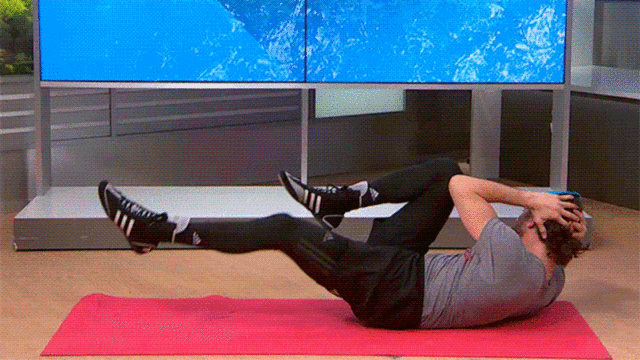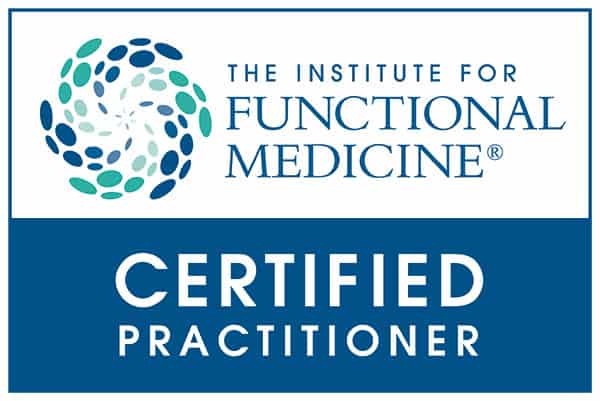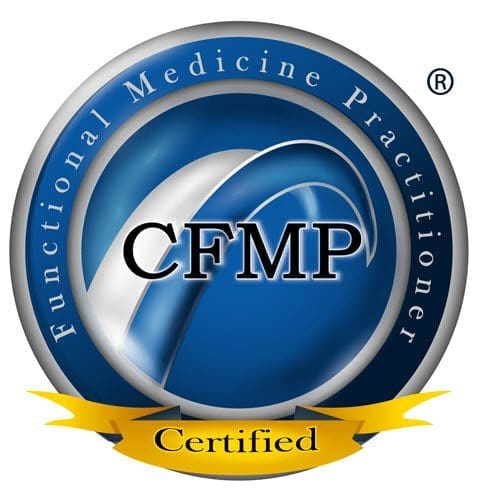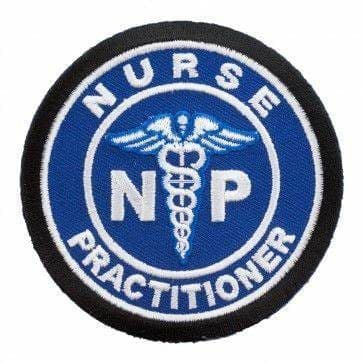
by Dr Alex Jimenez DC, APRN, FNP-BC, CFMP, IFMCP | Chiropractic, Fitness, Lower Back Pain
Choosing to receive treatment from a chiropractor won�t stop your slice or improve your putting, but it just might end up improving your overall game and lowering your score. It�s no secret that golf can be hard on your lower back. The quick, repetitive twisting motion required to swing a club puts your back at risk every time you play, and if you already have a back injury you�re putting other muscle groups at risk. Keep reading to learn how to improve your golf game in El Paso with chiropractic care.
How Chiropractic Boosts Your Game
Since a chiropractor is specifically trained to treat the entire neuromusculoskeletal system they are able to help golfers reduce the amount of stress and strain placed on their bodies. The lower back does undergo a lot of stress with the torque of a standard golf swing, but there are other body parts that can affect your golf game, too. Pain or range of motion issues in your shoulders, elbows, knees or wrists will definitely affect your swing and lead to inflated scores.
Chiropractic treatment can put your body back into alignment, remove nerve compression, and improve blood flow to vital muscles. When you are free from pain and your mobility isn�t hindered in any way, you can swing freely and focus on your game.
It All Begins With You
Although you can improve your golf game in El Paso with chiropractic, taking steps to help yourself will improve it even further. Arrive early at the course and do some warm up stretching and light swings before your game. Whether you hit some balls at the practice range or not, stretching and loosening up is key. You�ll also want to perform some light stretches after your round to keep your muscles loose and lengthened.
It�s easy to get dehydrated out on the golf course, but not drinking enough can set the stage for a strained muscle or similar injury. Make sure you drink plenty of water before, during, and after playing golf, especially if it is hot outside. If you walk the course when you play, avoid carrying your bag and pull it instead. Carrying a heavy golf bag over 18 holes can cause disc problems and irritate nerves.
If you have the option, avoid wearing metal spikes when you play. They have the potential to get stuck in the ground during your swing, causing a serious knee or back injury. And if you find that your swing is causing pain in any area of your body, consider taking lessons to learn a more efficient way to swing your clubs. If you follow these tips you�ll enjoy a pain-free round every time out.

Call Today!

by Dr Alex Jimenez DC, APRN, FNP-BC, CFMP, IFMCP | Chiropractic, Health
Have you ever wondered how many years your treating chiropractic doctor went to school for or how their education compares to that of other health care professionals? Knowing your doctor’s educational background and additional certifications is often essential to helping you choose the health care provider that is right for you. While the word�”doctor” automatically implies an extensive academic curriculum, each health care specialist has a unique and individualized educational program to complete prior to practicing in the field. Our doctors�have designed this article to help you understand your chiropractor�s educational background and how it may affect your care.
Chiropractors Educational Requirements?
As with many professionals, the specific requirements outlined often vary from state to state. Typically, chiropractors are required to have completed undergraduate pre-medical studies and obtained a bachelor�s degree prior to admission to a post graduate chiropractic college. Each chiropractic college has undergone a meticulous evaluation process to become certified by the Department of Education as an accredited educational institution.
The amount of time that your chiropractic doctor spends at a specific chiropractic academic institution is impressive. In fact, your chiropractor has spent a minimum of 4,200 hours at a chiropractic college prior to receiving his diploma. This time is spent in the classroom, laboratory, and clinic learning about the various aspects of the chiropractic profession and health care in general.
In the classroom, your doctor focuses his studies on the subjects of anatomy, physiology, diagnosis, pathology, biochemistry, neuromuscular and orthopedic evaluation, pediatric and geriatric care, microbiology, nutrition, immunology, radiology, philosophy, and clinical research. While this may seem like a lot, all of this information is assimilated and tested prior to advancement to clinical work. Once the student has completed his academic work, he will typically spend a minimum of 1,000 hours at a campus clinic under the guidance of a clinic doctor. During this time he will learn hands on how to diagnosis and treat patients in real clinical situations.
During your chiropractors education they will be tested through a number of different evaluations. Not only is your doctor subject to evaluation by their chiropractic college, they must also pass a series of national board examinations. Chiropractors practicing in the United States are required to have passed a series of four national board exams which evaluate them on their understanding of the basic sciences, clinical sciences, physiological therapeutics, diagnostic imaging, case management, and clinical competency. In addition to these requirements, following graduation and completion of national board examinations, each chiropractor must become certified by their state licensing agency.
The completion of these standards is not the end of the educational journey for chiropractic doctors. Depending on the state, each chiropractor is required to complete additional approved course work at designated times following their licensure. For example, Wisconsin requires a minimum of 40 hours of continuing education every two years following graduation.
Chiropractors Education In Comparison To Other Health Care Professionals?
After reading the above information, I feel it is safe to say that your chiropractic doctor knows far more about your health than just treating your back. To help understand this it is useful to compare a chiropractor�s education to other members of the health care community. Since many people are familiar with a medical doctor, we will compare their educational background with that of a chiropractic doctor. For starters, the typical chiropractic student will have completed a total of approximately 2,419 hours of academic work prior to the initiation of clinical studies. In comparison, the majority of medical students will have completed somewhere around 2,047 hours of study. Further, while each health care discipline has its strengths, chiropractic students undergo more hours of study in the fields of anatomy, embryology, physiology, biochemistry, diagnosis, x-ray, and orthopedics. In contrast, medical practitioners have had more classroom hours studying the subjects of pathology, psychology, and obstetrics.
When analyzing these numbers it is important to understand that while differences exist, each of your doctors has undertaken and completed a similar core education. In addition, it is important to remember that each of your doctors (even in the same health care discipline) possess various strengths to compensate for other health care professionals’ weaknesses and utilize a different approach to healing the body. In the end, finding the doctor that understands your needs and has the tools to provide you with the most appropriate care is what is important.

Call Today!

by Dr Alex Jimenez DC, APRN, FNP-BC, CFMP, IFMCP | Diets, Fitness
Drinking 32 ounces of energy drink is associated with potentially harmful changes in blood pressure and heart function that are beyond those seen with caffeine alone, according to a new study.
There are more than 500 energy drink products on the market, and their increased popularity is matched by a significant rise in energy drink-associated emergency department visits and deaths.
Manufacturers and fans of these products claim they are as safe as caffeine, but there is little evidence to support that claim.
Caffeine in doses up to 400 mg (about five cups of coffee) is generally recognized as safe by the Food and Drug Administration. While energy drinks usually contain caffeine, little is known about the safety of some of their other ingredients the study team writes in the Journal of the American Heart Association.
To see what effects these other components have, researchers compared physical changes in a group of 18 healthy men and women after consuming a commercially available energy drink and after drinking another concoction with the same amount of caffeine but none of the other ingredients.
Besides 320 mg of caffeine – the amount in about four cups of coffee – the energy drink contained 4 ounces of sugar, several B vitamins and a proprietary “energy blend” of taurine and other ingredients that are often found drinks like Monster Energy, Red Bull and 5-Hour Energy.
Sachin A. Shah of David Grant Medical Center on Travis Air Force Base and University of the Pacific in Stockton, California, and colleagues measured the participants’ blood pressure and used an electrocardiogram (often called an ECG or EKG) to measure heart electrical activity for 24 hours after the subjects consumed the drinks.
An ECG change known as QTc prolongation and sometimes associated with life-threatening irregularities in the heartbeat was seen after drinking the energy drink, but not after drinking the caffeine beverage, the study team reports.
Several drugs have been withdrawn from the market just for causing ECG changes of a similar magnitude, the authors note.
Blood pressure increased by close to 5 points after drinking the energy drink, but by just under 1 point after drinking the caffeine beverage. Blood pressure also remained elevated six hours later.
These changes are by no means worrisome for healthy individuals, the researchers say, but patients with certain heart conditions might need to exercise caution consuming energy drinks.
Larger studies are needed to evaluate the safety of the noncaffeine ingredients contained in energy drinks, they conclude.
“The energy drink industry claims that their products are safe because they have no more caffeine than a premium coffee house coffee,” said Dr. Jennifer L. Harris from University of Connecticut’s Rudd Center for Food Policy and Obesity in Storrs, who wasn’t involved in the study.
“However, energy drinks also contain a proprietary ‘energy blend,’ which typically consists of stimulants and other additives. Some of these ingredients (including taurine and guarana) have not been FDA-approved as safe in the food supply, and few studies have tested the effects of caffeine consumption together with these ‘novelty’ ingredients,” she said by email.
“On top of that, energy drinks are highly marketed to adolescent boys in ways that encourage risky behavior, including rapid and excessive consumption,” she said. “As a result, emergency room visits by young people in connection with energy drinks are rising.”
Any research that compares the effects of consuming energy drinks versus caffeine alone provides important evidence for public health advocates who have urged the energy drink companies to stop targeting youth with these potentially harmful products, Harris added.

by Dr Alex Jimenez DC, APRN, FNP-BC, CFMP, IFMCP | Chiropractic, Natural Health
El Paso, TX. Chiropractor Dr. Alex Jimenez focuses on the rise in opioid use among older adults.
SpineUniverse reported on a study that indicated a 10% increase in opioid addiction or dependency in patients prescribed such drugs to take care of postoperative pain. Although spine surgery was not among the forms of operations included in the research, it�s intriguing to see that 3% of the patients ages 55-years plus, disclosed addiction and opioid use.
Older adults as well as the elderly are part of about 100 million adults in the USA (US) affected by severe or chronic pain. Low back pain is neck pain, and among the most frequent causes of pain, followed by headache/ migraine pain. Spinal stenosis, spinal osteoarthritis, and degenerative disc disease are frequent investigations in elderly residents and our mature adult.
In a presentation by Sullivan in 2003 about chronic pain and prescription opioid abuse and dependence in mature adults, it had been reported that �the prevalence of pain increases with each decade of life Additionally, 80% were grown by pain criticisms in adults age 65 and older. Moreover, as the number of opioid prescriptions increased, so did use by older adults�but some medical studies regularly blown off addiction as temporary or rather rare.
Regulators React
Acknowledge and its particular bureaus and the government started to recognize opioid use and the potential risks in elderly Americans. In 2012, a study revealed that more than 700,000 adults (ages 45 to 84) were hospitalized particularly for opioid abuse. Mature adults as well as the elderly accounted for a five-time increase in hospitalizations for opioid abuse compared to younger Americans.
Adults of any age taking an opioid may experience drug unwanted effects that are possibly dangerous. But for mature adults or senior -aged individuals, the hazards are weightier. Why? Old people frequently take several medications simultaneously to treat different medical problems (eg, diabetes, hypertension). It may be a challenge for the patient to keep an eye on when to take a drug that is prescribed or remember if the medicine was taken, which may result in unintentional doses. An opioid drops, and introduces another tier of potential risks, including respiratory depression, lack of balance, confusion, dizziness, drowsiness, nausea.
In 2015, Congress introduced a Medicare-specific bill called �Ceasing Drug Exploitation and Shielding Seniors Act.� Now, we see changes dispensed, and monitored to prevent physician- shopping and other ways drugs could possibly be obtained and abused.

Managing Opioid Medications
Elderly patients or some adult live alone, in a household setting, receive home-health support, or reside in a assisted-living facility or alternative scenario. In some cases, the direction of the medication, including pain-relieving drug is managed by healthcare or nursing staff.
Many older adults and aged patients are quite capable of handling physician�s visits, their drugs, and everyday life. Then there are other people who want support. They might not realize they need help or may not ask. This is where friend, a family member or caregiver might help by being observant and step in to help. By way of example, does the patient take their medication as prescribed, but nevertheless look to be in pain? Does he /she stumble easily or fall, complain about feeling dizzy, confused, constipated, or have a few other criticisms?
Remember that people so do their needs for drugs and change with age. In unwanted effects and handling pain, the alternative can be an alternate kind of drug or a dose change. Considering many senior adults and aged men take multiple medications, it’s an excellent idea to bring OTC medication all prescription and nutritional supplements to each physician�s visit for review. This creates a superb chance for you and the individual to talk together with the doctor about new challenges and health changes.

Call Today!

by Dr Alex Jimenez DC, APRN, FNP-BC, CFMP, IFMCP | Natural Health, Wellness
Pregnant women should get their blood pressure checked at each prenatal visit to screen for preeclampsia, a potentially fatal complication that can damage the kidneys, liver, eyes and brain, new U.S. guidelines say.
While many doctors already monitor blood pressure throughout pregnancy, the U.S. Preventive Services Task Force (USPSTF) updated its guidelines for the first time since 1996 to stress that screening at every visit can help doctors catch and treat preeclampsia before it escalates from a mild problem to a life-threatening one.
“Preeclampsia is one of the most serious health problems affecting pregnant women,” task force member Dr. Maureen Phipps, a women’s health researcher at Brown University in Providence, Rhode Island, said by email.
“Because this condition is common and critical, the Task Force offers two separate recommendations to help women lower the risk associated with preeclampsia – screening for preeclampsia is recommended for all pregnant women, and women at high risk of developing the condition can take low-dose aspirin to help prevent it,” Phipps added by email.
The screening recommendations, published on Tuesday in JAMA, apply to women without a history of preeclampsia or high blood pressure. Separate guidelines advise low-dose aspirin after the first 12 weeks of pregnancy for women with a history of elevated blood pressure. (bit.ly/2oIwP5B)
Preeclampsia can progress quickly, and typically develops after 20 weeks of pregnancy. Blood pressure screening earlier in pregnancy can show normal results for women who go on to develop preeclampsia.
In addition to elevated blood pressure, women with preeclampsia may also have excess amounts of protein in their urine, as well as swelling in the feet, legs and hands.
Women may suffer from stroke, seizures, organ failure and in rare cases, death. For babies, complications include slower growth inside the uterus, low birth weight and death.
Risks for preeclampsia include a history of obesity, diabetes, kidney disease, lupus or rheumatoid arthritis, as well as a mother or sister who has experienced the condition.
Because the risks of preeclampsia increase with age, women may be able to lower their chances of developing this complication by having babies sooner, said Dr. Dana Gossett, an obstetrics and gynecology researcher at the University of California, San Francisco, and co-author of an accompanying editorial in JAMA.
“Beyond that, it is also important to ensure that all health problems are well managed prior to pregnancy,” Gossett said by email. “High blood pressure should be under good control, other diseases like kidney disease or lupus should be well controlled, and women should try to be close to their ideal body weight prior to conception.”
Checking blood pressure at every prenatal visit can help prevent complications for mothers and babies alike, said Dr. Martha Gulati, chief of cardiology at the University of Arizona College of Medicine in Phoenix and author of a separate editorial in JAMA Cardiology.
“This is something that should be provided to every woman as part of preventive care,” Gulati said by email. “We will save lives and prevent complications and death in pregnant women with this simple, cost-effective” test that doesn’t take much time.

by Dr Alex Jimenez DC, APRN, FNP-BC, CFMP, IFMCP | Fitness, Health, Wellness
Throwing punches in the ring is only part of the reason why professional boxers have knockout bodies. They also sculpt their strong physiques with tons of cross training—with a focus on building a rock-solid core. “Core conditioning is crucial for boxing,” says Chris Algieri, a professional boxer and two-time world champion. “Most of the power in a punch comes from being able to forcibly rotate your core, giving the strike explosive power.”
A sturdy core also helps keep a boxer’s body safe during a match. “The boxer has to be able to take blows to the body without damaging their ribs and organs,” explains Algieri. “The muscles in the abdominals and obliques act as body armor against opponents’ attacks.”
You don’t have to be a pro fighter to reap the ab-chiseling benefits of a boxer’s training. In the video above and in the gifs below, Algieri demonstrates his go-to conditioning exercises for a strong, stable core that’s ready to roll with the punches.
Bicycle crunches
This move is great for boxers because it focuses on core stability, while also rotating the shoulders and incorporating the lower body. Plus it’s an athletic movement that hones coordination.
What to do: Begin by laying on your back with hands behind head, then alternate bringing each elbow to the opposite knee, while maintaining a tight core. Do 10-20 continuous crunches with each elbow. Rest and then repeat 2-3 times.
Side plank

This is a key exercise for a boxer, since the movement promotes both core stability and shoulder girdle strength—crucial for throwing those strong punches.
What to do: Turn to one side with your legs extended and your feet and hips planted on the ground. Now, put your elbow under your shoulder and push your abs and hips up until the top of your body forms a straight line. Hold for 30-60 seconds. Return to the starting position, then move to the other side and repeat.
RELATED: Whittle Your Waist With These 5 Core Exercises
Alternating hands plank

This is an awesome move that challenges balance and coordination, as well as core strength.
What to do: Start off in a plank position. With your weight resting on your left forearm, slowly lift your right arm off the ground, reaching it out in front of you. Lower back down, and alternate to the left arm. Do this 10 times with each arm.
T-push-up

The T-push-up will help you build core stability, as well as posterior shoulder strength and flexibility. Boxers experience a lot of wear and tear on the shoulder, so it’s important to strengthen each part of the shoulder. Plus, the push-up works the anterior deltoid, which is important for movement and power when punching forward.
What to do: Begin in a standard push-up position. Lower your body slowly, as you would for a regular push-up. But as you push yourself up, turn to one side, raising that side’s arm towards the ceiling. Return your hand to the floor, then repeat on the other side. Do this 15 times on each side.
RELATED: 4 Ab-Sculpting Plank Variations
Alternating leg with ball pass + seated underhand pass

This exercise really works your lower abdominals and also promotes full-body coordination. Boxers will often explode out of a crouched position, so it’s important to have strong lower abs to support this movement. And the second part, seated underhand pass, uses isometric holds to promote core strength and stability. Plus it hones the hand-eye coordination necessary to be a great fighter.
What to do: From seated position with feet off the ground, squeeze your abs and pull knees in as you pass a weight (or medicine ball or an imaginary object) under your bent leg. Repeat 20 times.
Accordion side crunch

This isometric hold promotes core strength, while the crunch tones your obliques and increases endurance. It’s also another move that promotes coordination between the upper and lower body.
What to do: From side position, simultaneously crunch and pull knees in, keeping feet off the floor and focusing on your obliques. Repeat this 15-20 times.
Russian twist

This classic ab move will improve your core rotational strength, which is important for maximizing power when throwing a punch.
What to do: Starting in a seated position, explosively twist from one side to the other. Aim to twist to each side 15-20 times.
Sit-up with a twist

This is a full-core movement, which works you upper and lower ab muscles in the initial sit-up, then fires up your obliques during the twist. Similar to Russian twist, this sit-up variation strengthens rotational core movement and improves your ability to generate power from the core (aka the essentials for throwing a punch.)
What to do: Starting on your back, roll up into a sit-up, with one leg extended and one foot pressed into the floor, knee bent. From here, explosively twist to the side, bringing your opposite elbow to the bent knee. Do this 15-20 times, then switch to the other side.

by Dr Alex Jimenez DC, APRN, FNP-BC, CFMP, IFMCP | Diets, Fitness
When you’re on a diet, you may gravitate to the “diet” food section at the supermarket, but beware: Diet foods can destroy your diet and make you fat. Although labeled “diet” or “low-fat,” they may be high in sugar and can make you gain weight, not lose it.
Researchers from the University of Georgia fed rats a diet high in sugar but low in fat that was meant to imitate many popular diet foods, and found that the animals gained weight when compared to rats fed a balanced rodent diet.
In addition, the high-sugar diet induced a host of medical problems, including liver damage and brain inflammation.
“Most so-called diet products containing low or no fat have an increased amount of sugar and are camouflaged under fancy names, giving the impression that they are healthy, but the reality is that those foods may damage the liver and lead to obesity as well,” said the study’s principal investigator, Krzysztof Czaja.
“What’s really troubling in our findings is that the rats consuming high-sugar, low-fat diets didn’t consume significantly more calories than the rats fed a balanced diet,” said Czaja, an associate professor of veterinary biosciences and diagnostic imaging in UGA’s College of Veterinary Medicine.
“Our research shows that in rats fed a low-fat, high-sugar diet, the efficiency of generating body fat is more than twice as high — in other words, rats consuming low-fat high-sugar diets need less than half the number of calories to generate the same amount of body fat,” he said.
Researchers divided rats into three groups and monitored their body weight, caloric intake, body composition, and fecal samples over a period of four weeks. One group consumed a diet high in fat and sugar, another group was fed a low-fat, high-sugar diet, and a third group was given a balanced or “normal” diet.
Both the low-fat, high-sugar and high-fat, high-sugar groups showed significant increases in both body weight and body fat when compared to the balanced group. They also showed an increase in liver fat.
The accumulation of liver fat in the high-sugar, low-fat group, Czaja said, “is a very dangerous situation, because the liver accumulating more fat mimics the effect of non-alcoholic fatty liver disease.”
Non-alcoholic fatty liver disease is caused by fat buildup in the liver. Serious forms of the disease can cause liver damage similar to that caused by heavy alcohol use.
The two high-sugar diets also caused chronic inflammation in the intestinal tract and brain. Previous studies found that the brain inflammation changed signals in the brain that controlled the ability to determine when one is full.
“The brain changes resulting from these unbalanced diets seem to be long term, and it is still not known if they are reversible by balanced diets,” Czaja said.
Previous studies have shown other problems with low-fat diets. A study published in the Journal of Affective Disorders linked low-fat diets with depression. Low-fat diets have also been linked to heart disease. One study found that diets low in fat lowered the body’s level of HDL — the “good” cholesterol that helps protect against heart disease.






















